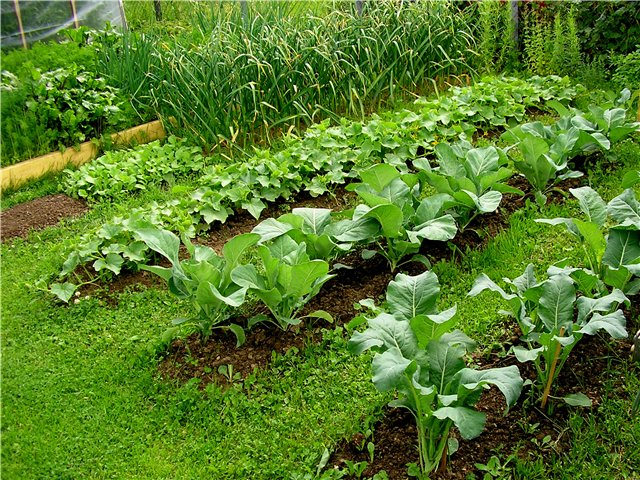
Our article will introduce you to information on how to properly organize a crop rotation in your country site. You will learn what crops are ideal predecessors and which can harm a certain type of vegetables.
The content of the article
- What then to plant for the next year: table
- Then plant cabbage and what to plant after cabbage and why?
- Then plant strawberries and what to plant after strawberries and why?
- Then plant bitter pepper and what to plant after a bitter pepper and why?
- Then plant sweet pepper and what to plant after sweet pepper, and why?
- Then plant beets and what to plant after beets, and why?
- Then plant peas and what to plant after peas and why?
- Then plant melons and watermelons and what to plant after melon and watermelon, and why?
- Then plant carrots and what to plant after carrots, and why?
- Then plant corn and what to plant after corn, and why?
- Then plant parsley and what to plant after parsley, and why?
- Then plant dill and what to plant after dill, and why?
- Then plant beans and what to plant after beans, and why?
- Then plant cucumbers and what to plant after cucumbers, and why?
- Then plant tomatoes and what to plant after tomatoes, and why?
- Then plant potatoes and what to plant after potatoes and why?
- Then plant garlic and what to plant after garlic, and why?
- Then plant onions and what to plant after a bow, and why?
- Then plant a radish and what to plant after a radish, and why?
- Then plant eggplant and what to plant after eggplant, and why?
- Then plant zucchini and what to plant after zucchini and why?
- Then plant mustard and what to plant after mustard, and why?
- Video: What is a crop rotation, how to organize a crop rotation in a summer cottage?
- Quite often, novice gardeners, planning, planting vegetables chosen for a new harvest, no better place. And most often the matter here is not in the ground and not in the amount of light that falls on the garden
- It’s just by inexperience that they plant some vegetables in a certain place for several years in a row. As a result, this leads to the fact that it sells a certain list of useful elements from the soil, and the plant that grows on this bed begins to hurt and poorly bear fruit
- An exceptionally correct crop rotation can help to avoid such a situation. The competent alternation of cultures will contribute to improving yields well, and, of course, will allow the soil to periodically update
What then to plant for the next year: table

Sevo -defense table
As in, probably, they understood the crop rotation, which helps plants to develop and bear fruit. It also helps vegetable crops receive all the necessary nutrients from the soil and effectively fight various pests. If you do not know how to plan the landing of vegetables in your site correctly, then study the information from a special table.
| Culture | Predecessors | You can’t plant |
| Potato | All types of cabbage and cucumbers | Peppers and tomatoes |
| Carrot | Potatoes and eggplant | Pasternak and celery |
| Cucumbers | White cabbage and herbs | Watermelons and melons |
| Onion | Dill and basil | Garlic and celery |
| Trutka | Tomatoes, onion garlic | Carrots and beets |
| Radish | Onions and tomatoes | Corn and spinach |
| Salad | Peas and beans | Salads and accus |
| Spinach | Radis and broccoli | Zucchini and watermelons |
| Peas | Onion and garlic | Beans and beans |
Then plant cabbage and what to plant after cabbage and why?
- Since cabbage requires quite a lot of nutrients, it is better to plant it after vegetables that do not very much deplete the soil. Such cultures include cucumbers, onions and almost all of the greens
- After the crop is assembled, it is better to fertilize the ground abundantly and in the early spring to plant potatoes, beets or carrots into it. But the cabbage of any kind of plant on this bed will be impossible for at least three seasons
- Moreover, even after such a large period of time you will first have to add compost or green fertilizers into the ground and only then plant cabbage seedlings on the bed
Then plant strawberries and what to plant after strawberries and why?
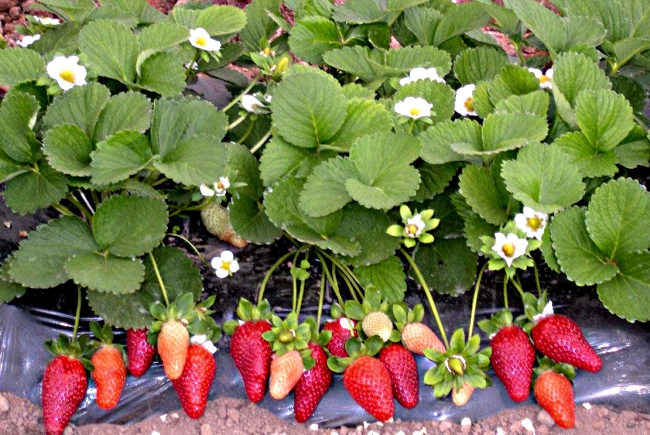
Remonant strawberries
- Although strawberries are not a very whimsical plant, it still has enemies. Most often, it spoils the slugs. Therefore, it will be better if you put this berry in the soil on which garlic or parsley previously grew up. The substances with which they will nourish the soil will scare away the slugs for another 6-9 months.
- In addition to these two plants, onion, radishes, peas and beans are good predecessors for strawberries. After the berry itself, it is best to plant sunflower, Jerusalem artichoke or celery on the bed.
Then plant bitter pepper and what to plant after a bitter pepper and why?
- Gorky pepper belongs to the nightshade family, so in no case should it be planted on the beds on which tomatoes, potatoes and eggplant previously grew. This is due to the fact that these plants have similar nutrition needs, which means that pepper can grow well and develop enough
- If you really strive to get the maximum crop, then plant pepper seedlings after cucumbers or zucchini. The next year, it is best to plant radishes on this bed or any kind of greens
- And remember, it will be possible to plant bitter pepper on the same place after 2-3 years and it is desirable that his predecessor be, for example, of the pod
Then plant sweet pepper and what to plant after sweet pepper, and why?
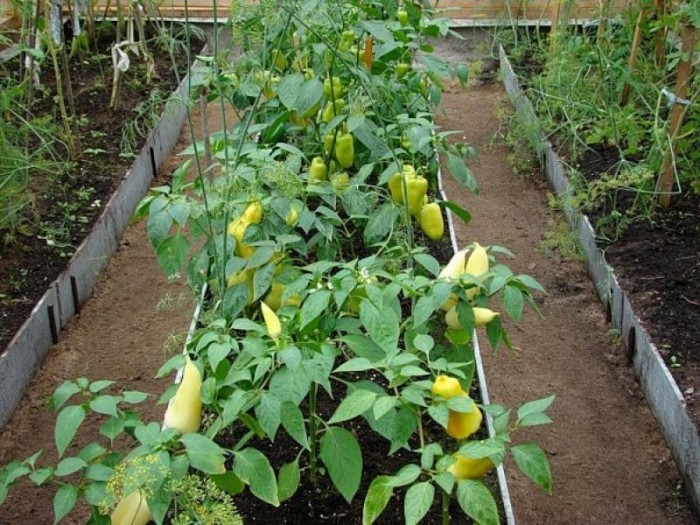
Rules for growing Bulgarian pepper
- Sweet pepper refers to plants that are quite exhausting the soil on which they grow. Because of this, at the end of the season, pathogens of diseases such as late blight, powdery mildew and root rot accumulate in it
- This means that next year, cucumbers, zucchini and pumpkin cannot be planted on this bed. But despite this, these three crops are considered ideal predecessors of sweet pepper. After them, you will not need to fertilize and loosen the soil. But after sweet pepper, it is best to plant onions, basil and asparagus
- When landing, consider another nuance. This vegetable tolerates organic fertilizers very poorly, so if you plan to make them, then you need to do this a year before the seedlings of pepper are planted on the bed
Then plant beets and what to plant after beets, and why?
- Beets, like any other root crop, requires a lot of nutrients and wet soil. Therefore, you can plant it on the same place every four years. If you do this more often, that is, the probability that the plant will hurt, deform or, in general, will not develop as it should
- The ideal predecessors of beetroot are considered zucchini, squash and early potatoes. These crops do not very much exhaust the soil, so it will definitely remain suitable for growing beets. After the red root of the most, it is best to plant tomatoes, eggplant and legumes
- Ideally, after beets, the bed should be taken under cultures with low consumption of nutrients. It can be onions, radishes and various salads
Then plant peas and what to plant after peas and why?
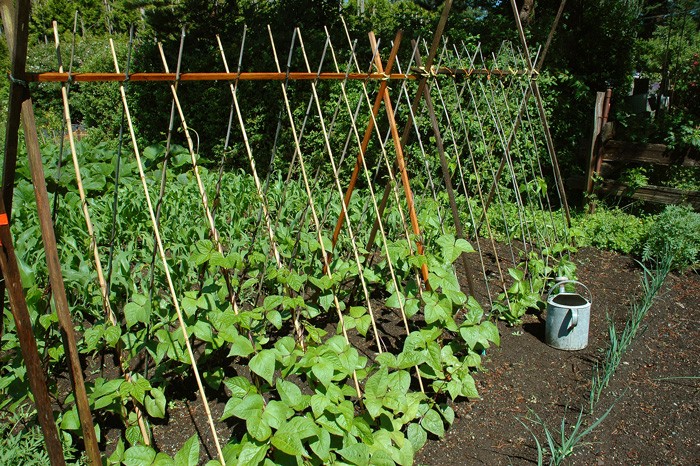
Growing peas
- The peas belongs to the Bobov family, which means that he, like all his relatives, distinguishes quite a lot of nitrogenous compounds into the soil. Therefore, after peas in the garden, cabbage will grow well, absolutely all nightshade and pumpkin crops
- But if you want peas to upgrade the soil as well as possible, treat it very carefully. If there is a lot of moisture in the ground, then the plant can hit root rot, the disputes of which can remain in the ground for more than four years
- If you do not cope with this task correctly, then all subsequent crops planted on this site will be very sick. If everything is fine, then the next year on this breast it will be possible to plant carrots, eggplant and any greens
Then plant melons and watermelons and what to plant after melon and watermelon, and why?
- Watermelons and melons grow well only if all conditions are created for them. The first rule, of course, is well fertilizers of the soil. It is desirable not to carry out this procedure before the landing itself, but in late autumn before the very frosts
- You also need to be able to correctly choose the place in which they will grow. It is unacceptable that these crops are not received by light and heat. This can have a negative impact on their appearance and their taste. It is also extremely important all the time attentive to crop rotation
- After all, planting these melons on the bed, on which zucchini or melon previously grew, is strictly prohibited. Radis, dill, basil, tomatoes and celery are considered the best predecessors of watermelons and melons. After the crop is assembled, put peas, patch beans or garlic on this site
Then plant carrots and what to plant after carrots, and why?

Planting and caring in open ground
- Carrots are quite useful vegetable, the regular use of which can help quickly raise immunity and improve the general condition of a person well. This root crop has such an effect due to the fact that it contains a huge amount of useful vitamins and trace elements
- Very often, gardeners, by ignorance of the elementary rules of gardening, begin to gradually reduce these beneficial qualities of carrots. Most often, having received a rich harvest, they plant it in the same place for several years in a row. Unfortunately, this behavior leads to the fact that the vegetable ceases to develop correctly
- If you want your carrots to be always tasty and healthy, then be sure to follow the vegetables on this bed in the previous season. Carrots will give a good harvest after onions, potatoes, tomato, salad and cucumbers. Parsley, bitter and sweet pepper, black radish and squash can spoil the taste and appearance of this root crop
Then plant corn and what to plant after corn, and why?
- Some amateur gardeners consider corn not a very whimsical plant, so throwing it into the ground, they simply periodically break it and sometimes water it. Most often, such a negligent attitude leads to the fact that it gives a small harvest. This is due to the fact that this culture, like any other, needs proper top dressing
- After all, it is on the desired amount of nutrients that it depends on how large and sweet the corn will grow. But unfortunately, it is quite sensitive to chemically fertilizers. Very often after top dressing, she begins to hurt even more
- Therefore, it will be better if you plant this culture after vegetables that do not deplete the soil, but rather update it. In front of corn on the garden, tomatoes, potatoes, beans or onions should be grown. After the corn itself, it is best to plant zucchini, beets, dill, basil and sage
Then plant parsley and what to plant after parsley, and why?
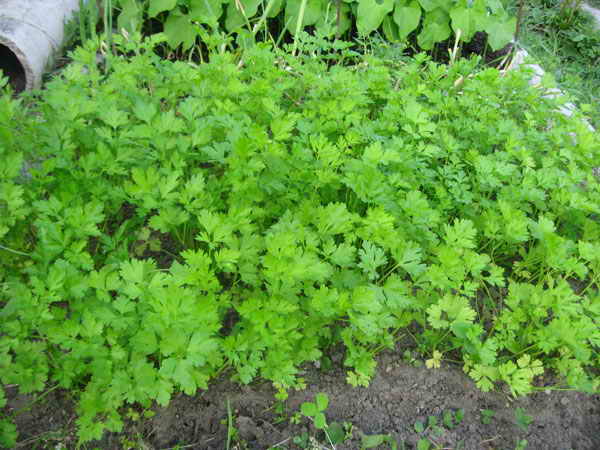
Parsley seedlings
- Parsley belongs to the umbrella family, so in no case can it be planted after carrots, dill, celery and cilantro. Since they have the same needs for nutrients, this will necessarily affect the appearance and taste of this seasoning. The best predecessors for this culture are garlic and all legumes
- They saturate the soil with substances useful for parsley, and also kill the entire pathogenic flora. After Petrushka itself in the garden, nightshade will be best grown. Therefore, after the parsley is removed, you can safely plant potatoes, tomatoes or eggplant in its place
Then plant dill and what to plant after dill, and why?
- For many people, dill is a favorite seasoning. Most often, of course, it is added to fresh salads, sometimes to soups and in marinades. But growing a good harvest of this green is quite difficult. If you sow it very thickly, then the stems will just chase up and do not branch badly
- But perhaps the most terrible problem of dill is aphid. If it affects the plant, then almost always this leads to its death. Onions can help you help you help you. If you put it in the soil a year before sowing the crop, then these pests will bypass your greens
- Another good friend of dill is considered garlic. He has similar qualities and is also able to save the ground from some pathogenic dispute. The next year, on this bed, the beam is to plant tomatoes, eggplant, cucumbers or salad
Then plant beans and what to plant after beans, and why?
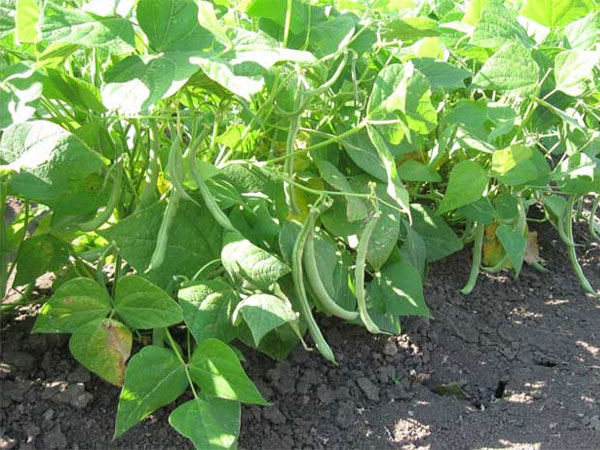
Sharp beans
- The beans belongs to the Beaver family, so it is able to enrich the soil with nitrogen. This makes it just an indispensable plant for periodic soil renewal. Therefore, it is best to sow it after cultures such as corn, bitter and sweet pepper, carrots, beets and root celery. The most pleasant thing is that after harvesting at the place of beans, any plant will grow
- And due to the fact that there will be a lot of useful substances in the soil, it will also give a plentiful crop. Therefore, after beans, almost any cultures can be planted on the bed. You can quite calmly plant cabbage, cucumbers, pumpkin, squash and zucchini, tomatoes, eggplant, garlic and onions, potatoes
Then plant cucumbers and what to plant after cucumbers, and why?
- It will be better if cucumbers will grow in a new place every year. But seeking a new place for landing, be sure to remember that this vegetable is quite demanding. Since in the process of growth he will need quite a lot of nutrients, during the season the Earth needs to be fed 2-3 times
- And this means that cucumbers in no case should be planted in exhausted soil. If you want your cucumbers to give the largest crop, then grow beans, peas, beans or herbs in this garden bed.
- And after the fruits are collected, you can start preparing for the next season. In the fall, loosen the soil well and deliver it with green fertilizers. And with the advent of heat, plant carrots, beets, radishes, radish, celery on the bed
Then plant tomatoes and what to plant after tomatoes, and why?

Early tomatoes for open ground
- Remember, tomatoes love to grow on neutral soil, so it is very important that the place of their growth changes at least once every two years. If they lag behind the same place longer, then the soil will become sour enough and this will quickly affect the amount of the crop
- It is also necessary to take into account the fact that tomatoes cannot be planted after plants that are one to remove the species (potatoes, physical and eggplant). Since they have the same pests, this can lead to improper development of culture
- Ideal allies of the tomato are cabbage, corn, onions, watermelons and peas. If you first grow on the garden bed and only then plant tomatoes on it, then you will be provided with a good harvest
Then plant potatoes and what to plant after potatoes and why?
- If you want potatoes to give a good harvest, then before its landing, be sure to improve the soil. To do this, from the fall, run the bed of oats. This plant disinfects the soil well and cleanses it of pathogenic dispute
- If for some reason you do not want to sow this culture, then following the recommendations of crop rotation, first grow white cabbage, broccoli, beets, carrots or basil in this area. After removing the crop, be sure to deliver the soil with compost and the next spring you can safely plant potatoes on this bed
- But remember, it is impossible to grow potatoes in the same place for more than two years. If it grows on one bed longer, it will begin to hurt a lot and be bad, so it will be better if you plant onion, garlic, cucumbers, zucchini, parsley or patching beans in the soil after harvesting.
Then plant garlic and what to plant after garlic, and why?
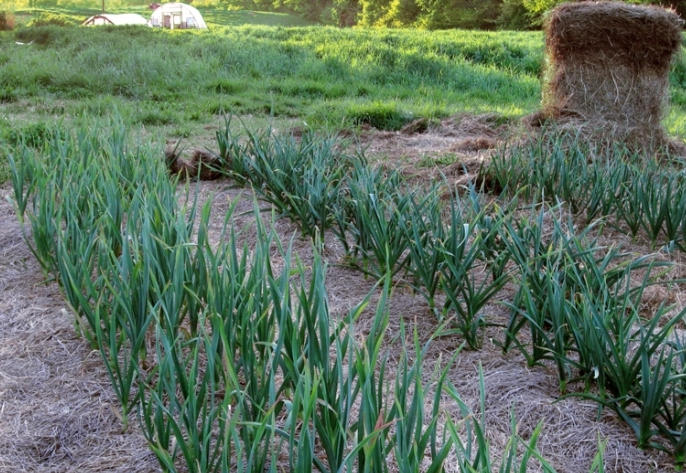
Winter garlic
- Garlic refers to herbaceous perennial crops, which are most often planted in the soil for the winter. This allows you to get a rather early and most pleasant almost good harvest. If you manage to choose the right soil and fertilize it well, then it is likely that your work will be well rewarded
- In order to be so predecessors of garlic, there should be vegetables with a long root system. After all, if you plant it after a bow, then it is unlikely to be able to develop well. This is due to the fact that onions and garlic have a rather small root system and that means they will receive food from one layer of earth
- Therefore, it is best to plant garlic on the bed on which carrots, root celery, zucchini, cucumbers and squirrels used to grow before. After harvesting on the bed, it will be possible to plant potatoes, tomatoes, eggplant, corn and all types of salads
Then plant onions and what to plant after a bow, and why?
- Onions belongs to the early rapidly ripening cultures, which are very fond of soil fertilized organic. In exhausted ground, this vegetable will not grow. Therefore, it can be planted only after the same early and rapidly ripening crops. The best option in this case will be dill, radishes and salad
- If you only need onions on a green feather, then you can quite calmly sow on the bed, for example, an early radishes to collect it, and to plant a bow in its place. So you can save a place and collect two different crops during the season at once. After the onion, tomatoes, cucumbers, peppers, white cabbage, beets will grow well
Then plant a radish and what to plant after a radish, and why?
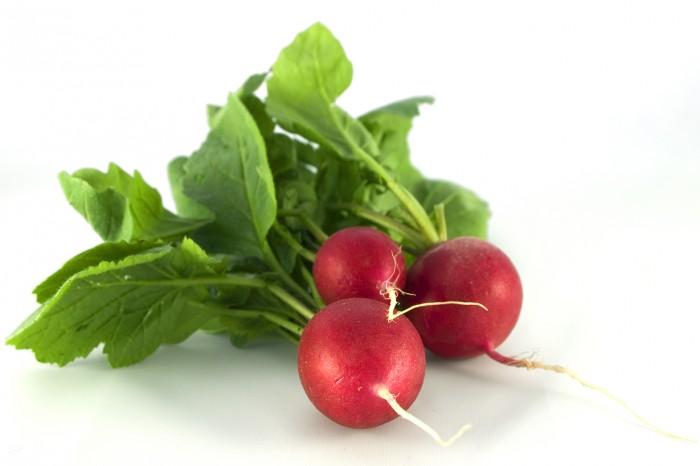
Radis Daikon
- Radis belongs to cultures that can tolerate even small frosts. This property of this vegetable contributes to the fact that gardeners can sow it in the ground literally at the very beginning of April. If you want this vegetable to be on your table all summer, then sow it in open ground with intervals of 10-15 days
- After the radishes are assembled in its place, you can sow any early greens or salad. All that you must consider when landing is that it should in no case be planted on the bed on which his relatives previously grew
- These include the cabbage of all types, turnips and horseradish. Ideal allies of the radishes are considered tomatoes, eggplant, cucumbers, basil and beans. After a radish in the garden, patch beans, peas, pumpkin, zucchini, watermelons and melons will feel good well
Then plant eggplant and what to plant after eggplant, and why?
- Eggplant is sufficiently moisture -loving plants, so it is very important that the soil in which they grow always abundantly political. They also do not like shadow very much. If the eggplant receives a minimum amount of heat and light, then this leads to a complete lack of fruiting
- Therefore, this vegetable must be planted as far as possible from shrubs, trees, buildings and high vegetable crops. If we talk about crop rotation, then the best predecessors for eggplant are legumes, cucumbers, parsley, dill and cilantro
- But perhaps the most pleasant thing is that this vegetable does not very much deplete the soil, so after it almost all crops can grow on the site. But it is still believed that after eggplant it is best to plant onions, garlic, thyme, pumpkin or root crops
Then plant zucchini and what to plant after zucchini and why?
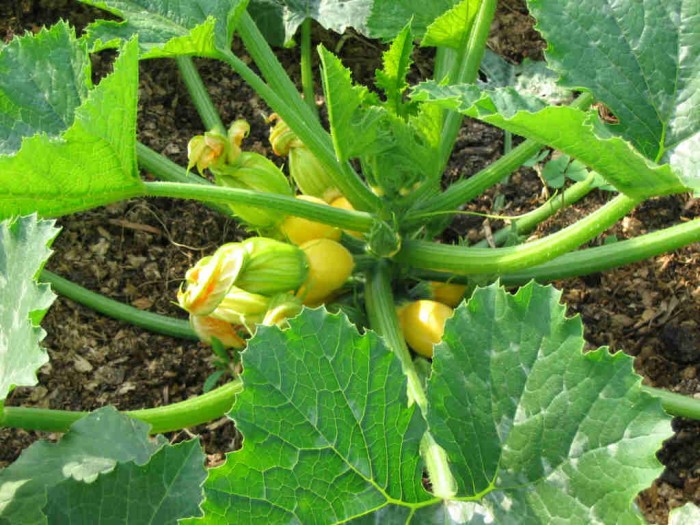
Basics of growing zucchini in a summer cottage
- The zucchini, like all other vegetables, picks up nutrients from a certain soil layer, so in no case should it be planted for one place for several years in a row. At first, the yield will simply begin to decline, and then the plant, in general, will cease to bear fruit
- If you plan to eat this vegetable throughout the summer season, then plant it in the soil, on which potatoes, tomatoes or dill previously grew up. These plants belong to completely different families, so for nutrition they need substances that practically do not affect the development of zucchini
- After gathering a crop on the garden bed, to plant cultures, capable of updating and disinfecting the Earth. Such plants include peas, beans, beans and garlic
Then plant mustard and what to plant after mustard, and why?
- Most often, mustard is sown to the site for soil renewal. This unpretentious plant helps to return to normal the most exhausted soil. Usually it is brought into the ground immediately after the crop is removed
- Before the onset of frosts, it roots well enough and thereby slightly loosening the soil and saturates it with phosphates. In winter, it prevents deep freezing of the soil and protects it from wind erosion. It grows perfectly after all familiar vegetable crops
- The only thing you should take into account is, after mustard in the garden, its relatives will poorly develop (cabbage, turnip, radish, radishes, a handle). After the mustard is beveled and removed you will only need to dioxide the ground and you can plant any vegetables and herbs in it
